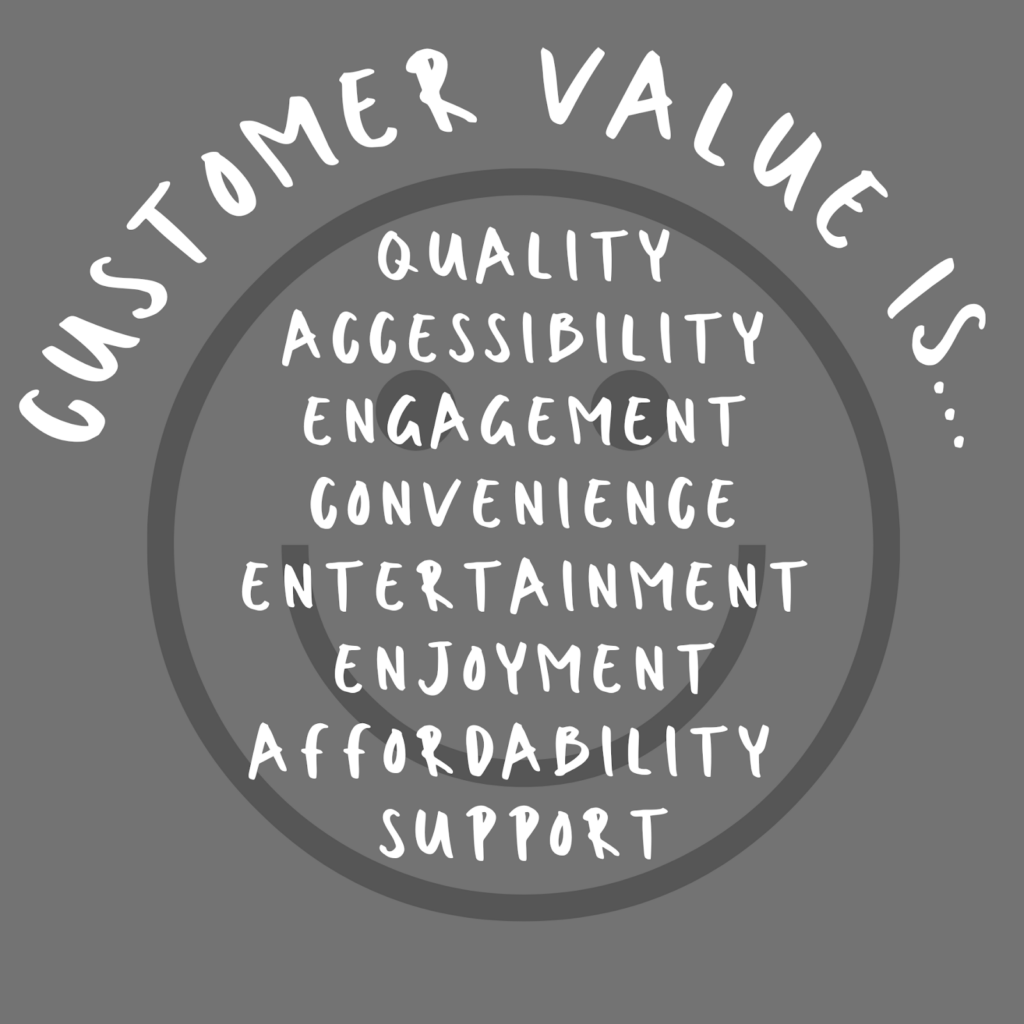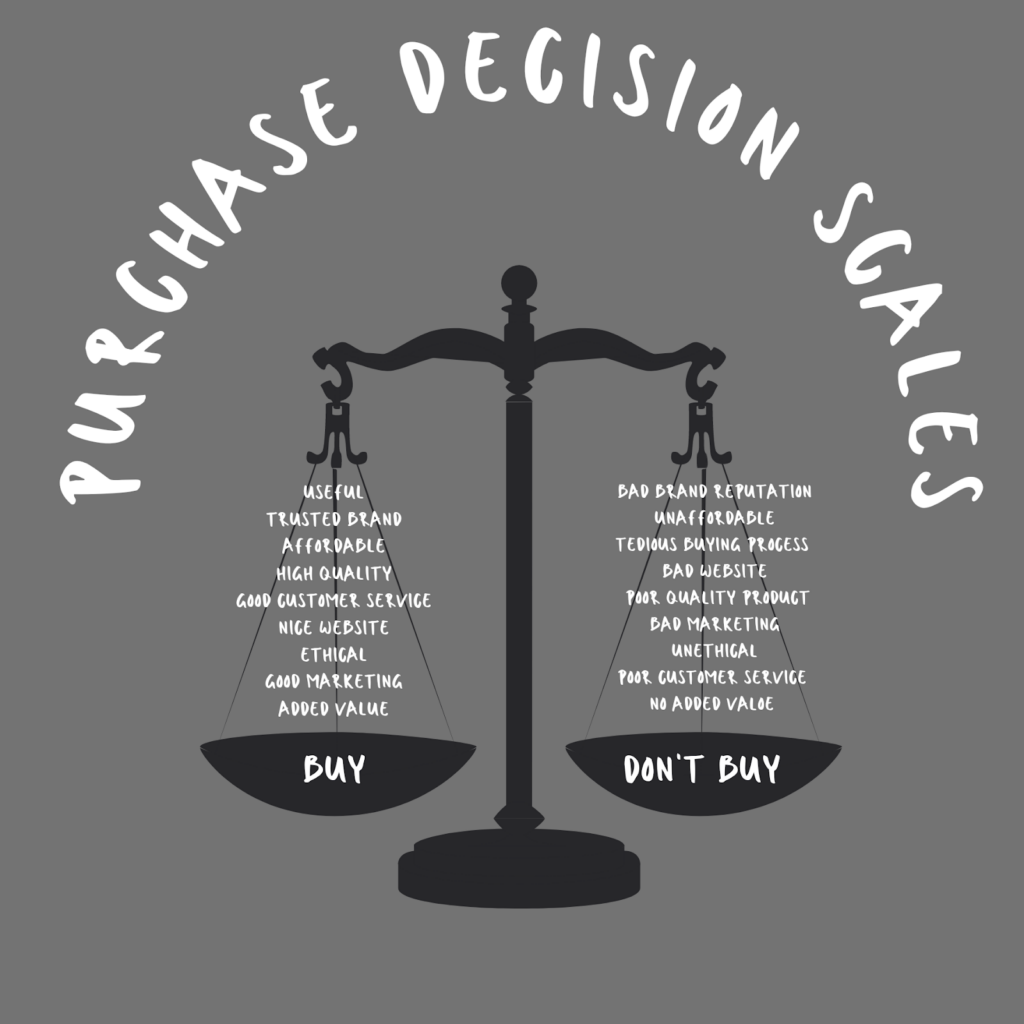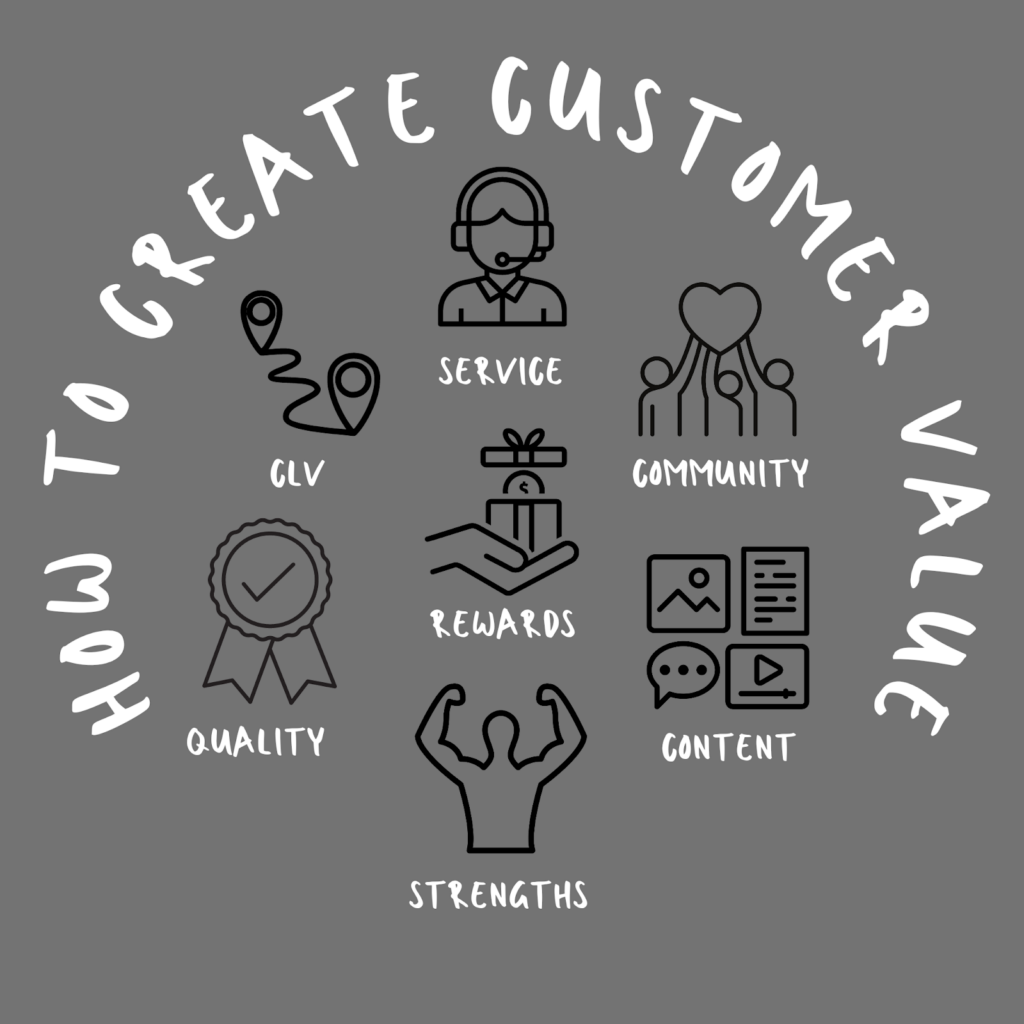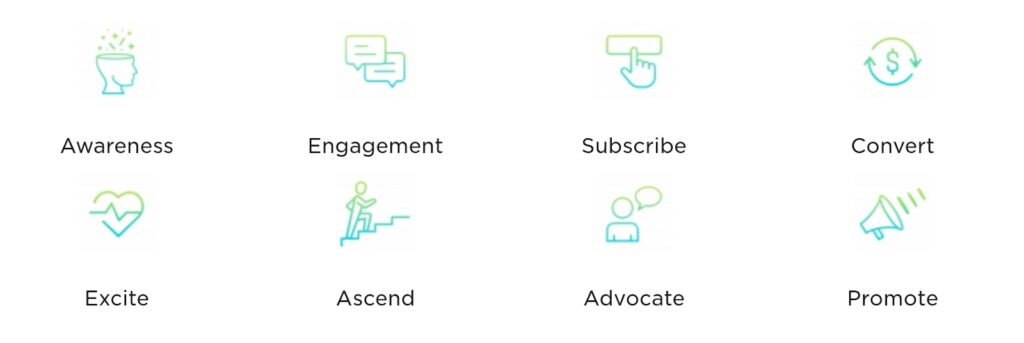MARKETING
How to Effortlessly Create Customer Value

To be competitive as a brand, it’s essential to constantly offer value to your customers.
Customer value is what makes the wheels of commerce go around. It’s what makes your customers buy from you, engage with you, follow your accounts, give you positive reviews, and recommend you to their friends.
If you’re familiar with our Customer Value Journey framework, you’ll already know a lot about how to create and curate customer value. In this article, we’ll zoom in on what customer value is and some ways you can deploy it in your Customer Value Journey.
What Do We Mean By “Create Customer Value?”

“Customer value” is anything that makes your product and/or brand more appealing to customers. By adding value to your brand, product, and customer experience, you bring more decision-swaying benefits to your customer’s journey.
“Value” is anything your customer wants, needs, or enjoys. The most obvious “value” is monetary—getting a quality item for a low price is something every bargain hunter enjoys—but it’s far from the only “value” available.
Value for your customers can include:
- Great product quality
- Fantastic customer service
- A positive brand presence
- Ongoing customer support
- Relevant and personalized marketing
- A rewarding loyalty program
- A positive customer experience
- A trustworthy brand reputation
- A caring brand community
Let’s say, for example, that you are a Canadian telecoms brand. You produce the best business phone system in Calgary, but people still buy from your competitors. How can you bring them to you?
Adding value is the best way to turn the tide of customers toward you. You can do things like improve your customer service, add 24/7 support options, tailor your marketing in ways your customers prefer, produce engaging and educational content, add loyalty rewards, and more.
Why Is It Important To Create Value For Your Customers?
Creating value for your customers is crucial because the more value you can offer, the more likely customers are to buy your product, subscribe to your brand, and ultimately become loyal members of your customer community.
Think of every purchase decision in terms of a pair of scales. For a potential customer to purchase your product, its value has to outweigh its drawbacks.
The most obvious element of the purchase decision is the monetary cost. But there’s a lot more to it than that. Things like time, negative experience, and risk also add to the perceived “cost” of your product or service.
For example, if your website does not look safe and professional, your customer may avoid buying your product because they fear credit card scams—even if they would find your product useful and can afford it.
Similarly, if your buying process is too complicated and lengthy, or your customer service could be better, the purchase-decision scales could tip in favor of taking custom elsewhere.

By creating extra value for your customers, you weigh the scale towards the decision to buy. And the more value you add, the better the benefits get.
As well as buying your product, customers who get value from you will return again and again. They will also engage with your content, recommend you to their friends, and boost your brand reputation in general.
All in all, creating customer value is well worth doing. So, how do you go about it?
How To Create Customer Value

Use our Customer Value Journey

Our Customer Value journey is a framework that helps you to understand where and how you can add value to help your customers along their journey to conversion and beyond.
It consists of eight steps: Awareness, Engagement, Subscribe, Convert, Excite, Ascend, Advocate, Promote.

You can find plenty about our CVJ framework, but here’s a (very!) brief rundown:
- Aware: Get your target audience’s attention with content that is relevant and valuable for them.
- Engage: Communicate with your customers/prospects. Let them know that you care about them.
- Subscribe: Try and persuade your burgeoning customers to subscribe to your emails and follow you on social media.
- Convert: This is the point at which your prospect becomes a customer. You can use various value-adding tactics to nudge them through this stage.
- Excite: Build on the excitement of a purchase by throwing in added extras.
- Ascend: Keep up communication and keep adding value to make your one-time buyer a repeat customer.
- Advocate: Ask your happy customer to write you positive reviews, share your content, or recommend you to their friends.
- Promote: Keep encouraging your customer community to promote your brand, and reward them for doing so.
Provide Stellar Customer Service

The quality of your customer service can make or break your customer experience. Great customer service adds a huge amount of value to your CVJ.
What does good customer service look like? Well, it ranges from things as simple as sending emails saying “Thanks for your order,” to more complex efforts, such as having a fully equipped and responsive customer support center staffed with patient, helpful, and friendly operatives.
Another way of offering great value and customer service is by having a product that will offer unique benefits. For example, offering online business cards with a QR code that automatically captures their information so that you can use analytics and metrics to measure your networking efforts.
Build Community

You can easily add value for your customer by making them feel valued. One way to do this is to focus on building relationships and community with your customers.
You can strengthen your customer relationships through things like sending emails on their birthdays, personalizing your marketing content so that it’s relevant for each customer, and generally showing that you are listening to them and you care for them.
You can expand on this by providing space for your customers to communicate with you and one another. Loyalty clubs, social media pages, events for loyal customers, and so on can all help to build a rewarding community that will add value for your customers.
Focus On Quality Over Price

It’s a common misconception that making an item cheaper adds value for the customer. While price is certainly an important consideration in purchase decisions, quality often trumps it.
However low your prices are, your customers won’t be impressed if your product is low quality. Most customers are happy to pay a bit more for a product that works well, looks good, and will last.
Most customers understand that true quality costs more. So, if you drop your prices too low, customers will automatically assume that your product is low quality.
The old “quality vs. quantity” debate is, to an extent, false—but it is still important that your customers have a good experience with your product. And that means creating something of acceptable quality.
So, we recommend focusing on the quality of your product first and foremost, and deciding the price once you are aware of your profit margins. A quality product that costs a little more will gain you more repeat customers than a poor-quality product at a low price.
Play To Your Strengths

Your strengths are where your true value lies. Maybe you have an excellent customer service team, the best quality product on the market, or a fantastic social media following. Whatever it is that you do best, play to it.
Your strengths form your USP (or, at least, part of it). Your strengths are where your value exceeds that of your competitors. So, make the most of them!
Educate, Entertain, & Engage

Producing great content is a quick and easy way to add a lot of value and boost your brand’s presence and reputation.
Blog posts, videos, newsletters, social media posts, competitions, games, and webinars—all of these are great for entertaining, educating, and engaging your customers.
Anything you can put out there that your customers will enjoy or find interesting adds value to your product, no matter what your product is.
Let’s say, for example, that you provide online fax services in Canada. On the face of it, this may not seem like a promising topic, but the right content can bring a huge amount of interest to your brand.
You could produce how-to videos, talk about the history of faxing, run case studies, and more. All of it will add value for your audience and bring in new customers.
Reward Loyalty

A loyalty scheme adds value for your customer and directly encourages repeat purchases.
You can use your loyalty scheme to add value in a variety of ways. Many retail businesses use point schemes, in which customers get a certain number of points per purchase which they can then use to offset the cost of later purchases.
Other examples of loyalty rewards can include:
- Exclusive content
- Free gifts
- First looks at new product lines
- Discounts
- Privileged access to events, products, and services
- Enhanced customer service
Boost Your Business & Add Customer Value with A Customer Value Journey
By designing a Customer Value Journey, you will give yourself a head start when adding value.
A Customer Value Journey will show you exactly where in your customer journey to add value and the form it should take.

Are You Ready to Master Social Media?
Become a Certified Social Media Specialist and learn the newest strategies (by social platform) to draw organic traffic to your social media sites.
For example, a speedy and safe website adds value at the point of sale. It encourages people to convert quickly and with confidence.
After a sale, a loyalty scheme and follow-up emails reinforce your customer’s positive experience and help strengthen your brand/customer relationships.
At all points, a positive brand presence, rewarding content, and a quality product are brilliant for adding value for your customers.
So, to give your customers the value that they deserve, sit down and plot your Customer Value Journey.
MARKETING
Ecommerce evolution: Blurring the lines between B2B and B2C

Understanding convergence
B2B and B2C ecommerce are two distinct models of online selling. B2B ecommerce is between businesses, such as wholesalers, distributors, and manufacturers. B2C ecommerce refers to transactions between businesses like retailers and consumer brands, directly to individual shoppers.
However, in recent years, the boundaries between these two models have started to fade. This is known as the convergence between B2B and B2C ecommerce and how they are becoming more similar and integrated.
Source: White Paper: The evolution of the B2B Consumer Buyer (ClientPoint, Jan 2024)
What’s driving this change?
Ever increasing customer expectations
Customers today expect the same level of convenience, speed, and personalization in their B2B transactions as they do in their B2C interactions. B2B buyers are increasingly influenced by their B2C experiences. They want research, compare, and purchase products online, seamlessly transitioning between devices and channels. They also prefer to research and purchase online, using multiple devices and channels.
Forrester, 68% of buyers prefer to research on their own, online . Customers today expect the same level of convenience, speed, and personalization in their B2B transactions as they do in their B2C interactions. B2B buyers are increasingly influenced by their B2C experiences. They want research, compare, and purchase products online, seamlessly transitioning between devices and channels. They also prefer to research and purchase online, using multiple devices and channels
Technology and omnichannel strategies
Technology enables B2B and B2C ecommerce platforms to offer more features and functionalities, such as mobile optimization, chatbots, AI, and augmented reality. Omnichannel strategies allow B2B and B2C ecommerce businesses to provide a seamless and consistent customer experience across different touchpoints, such as websites, social media, email, and physical stores.
However, with every great leap forward comes its own set of challenges. The convergence of B2B and B2C markets means increased competition. Businesses now not only have to compete with their traditional rivals, but also with new entrants and disruptors from different sectors. For example, Amazon Business, a B2B ecommerce platform, has become a major threat to many B2B ecommerce businesses, as it offers a wide range of products, low prices, and fast delivery
“Amazon Business has proven that B2B ecommerce can leverage popular B2C-like functionality” argues Joe Albrecht, CEO / Managing Partner, Xngage. . With features like Subscribe-and-Save (auto-replenishment), one-click buying, and curated assortments by job role or work location, they make it easy for B2B buyers to go to their website and never leave. Plus, with exceptional customer service and promotional incentives like Amazon Business Prime Days, they have created a reinforcing loyalty loop.
And yet, according to Barron’s, Amazon Business is only expected to capture 1.5% of the $5.7 Trillion addressable business market by 2025. If other B2B companies can truly become digital-first organizations, they can compete and win in this fragmented space, too.”
If other B2B companies can truly become digital-first organizations, they can also compete and win in this fragmented space
Joe AlbrechtCEO/Managing Partner, XNGAGE
Increasing complexity
Another challenge is the increased complexity and cost of managing a converging ecommerce business. Businesses have to deal with different customer segments, requirements, and expectations, which may require different strategies, processes, and systems. For instance, B2B ecommerce businesses may have to handle more complex transactions, such as bulk orders, contract negotiations, and invoicing, while B2C ecommerce businesses may have to handle more customer service, returns, and loyalty programs. Moreover, B2B and B2C ecommerce businesses must invest in technology and infrastructure to support their convergence efforts, which may increase their operational and maintenance costs.
How to win
Here are a few ways companies can get ahead of the game:
Adopt B2C-like features in B2B platforms
User-friendly design, easy navigation, product reviews, personalization, recommendations, and ratings can help B2B ecommerce businesses to attract and retain more customers, as well as to increase their conversion and retention rates.
According to McKinsey, ecommerce businesses that offer B2C-like features like personalization can increase their revenues by 15% and reduce their costs by 20%. You can do this through personalization of your website with tools like Product Recommendations that help suggest related products to increase sales.
Focus on personalization and customer experience
B2B and B2C ecommerce businesses need to understand their customers’ needs, preferences, and behaviors, and tailor their offerings and interactions accordingly. Personalization and customer experience can help B2B and B2C ecommerce businesses to increase customer satisfaction, loyalty, and advocacy, as well as to improve their brand reputation and competitive advantage. According to a Salesforce report, 88% of customers say that the experience a company provides is as important as its products or services.
Market based on customer insights
Data and analytics can help B2B and B2C ecommerce businesses to gain insights into their customers, markets, competitors, and performance, and to optimize their strategies and operations accordingly. Data and analytics can also help B2B and B2C ecommerce businesses to identify new opportunities, trends, and innovations, and to anticipate and respond to customer needs and expectations. According to McKinsey, data-driven organizations are 23 times more likely to acquire customers, six times more likely to retain customers, and 19 times more likely to be profitable.
What’s next?
The convergence of B2B and B2C ecommerce is not a temporary phenomenon, but a long-term trend that will continue to shape the future of ecommerce. According to Statista, the global B2B ecommerce market is expected to reach $20.9 trillion by 2027, surpassing the B2C ecommerce market, which is expected to reach $10.5 trillion by 2027. Moreover, the report predicts that the convergence of B2B and B2C ecommerce will create new business models, such as B2B2C, B2A (business to anyone), and C2B (consumer to business).
Therefore, B2B and B2C ecommerce businesses need to prepare for the converging ecommerce landscape and take advantage of the opportunities and challenges it presents. Here are some recommendations for B2B and B2C ecommerce businesses to navigate the converging landscape:
- Conduct a thorough analysis of your customers, competitors, and market, and identify the gaps and opportunities for convergence.
- Develop a clear vision and strategy for convergence, and align your goals, objectives, and metrics with it.
- Invest in technology and infrastructure that can support your convergence efforts, such as cloud, mobile, AI, and omnichannel platforms.
- Implement B2C-like features in your B2B platforms, and vice versa, to enhance your customer experience and satisfaction.
- Personalize your offerings and interactions with your customers, and provide them with relevant and valuable content and solutions.
- Leverage data and analytics to optimize your performance and decision making, and to innovate and differentiate your business.
- Collaborate and partner with other B2B and B2C ecommerce businesses, as well as with other stakeholders, such as suppliers, distributors, and customers, to create value and synergy.
- Monitor and evaluate your convergence efforts, and adapt and improve them as needed.
By following these recommendations, B2B and B2C ecommerce businesses can bridge the gap between their models and create a more integrated and seamless ecommerce experience for their customers and themselves.
MARKETING
Streamlining Processes for Increased Efficiency and Results

How can businesses succeed nowadays when technology rules? With competition getting tougher and customers changing their preferences often, it’s a challenge. But using marketing automation can help make things easier and get better results. And in the future, it’s going to be even more important for all kinds of businesses.
So, let’s discuss how businesses can leverage marketing automation to stay ahead and thrive.
Benefits of automation marketing automation to boost your efforts
First, let’s explore the benefits of marketing automation to supercharge your efforts:
Marketing automation simplifies repetitive tasks, saving time and effort.
With automated workflows, processes become more efficient, leading to better productivity. For instance, automation not only streamlines tasks like email campaigns but also optimizes website speed, ensuring a seamless user experience. A faster website not only enhances customer satisfaction but also positively impacts search engine rankings, driving more organic traffic and ultimately boosting conversions.
Automation allows for precise targeting, reaching the right audience with personalized messages.
With automated workflows, processes become more efficient, leading to better productivity. A great example of automated workflow is Pipedrive & WhatsApp Integration in which an automated welcome message pops up on their WhatsApp
within seconds once a potential customer expresses interest in your business.
Increases ROI
By optimizing campaigns and reducing manual labor, automation can significantly improve return on investment.
Leveraging automation enables businesses to scale their marketing efforts effectively, driving growth and success. Additionally, incorporating lead scoring into automated marketing processes can streamline the identification of high-potential prospects, further optimizing resource allocation and maximizing conversion rates.
Harnessing the power of marketing automation can revolutionize your marketing strategy, leading to increased efficiency, higher returns, and sustainable growth in today’s competitive market. So, why wait? Start automating your marketing efforts today and propel your business to new heights, moreover if you have just learned ways on how to create an online business
How marketing automation can simplify operations and increase efficiency
Understanding the Change
Marketing automation has evolved significantly over time, from basic email marketing campaigns to sophisticated platforms that can manage entire marketing strategies. This progress has been fueled by advances in technology, particularly artificial intelligence (AI) and machine learning, making automation smarter and more adaptable.
One of the main reasons for this shift is the vast amount of data available to marketers today. From understanding customer demographics to analyzing behavior, the sheer volume of data is staggering. Marketing automation platforms use this data to create highly personalized and targeted campaigns, allowing businesses to connect with their audience on a deeper level.
The Emergence of AI-Powered Automation
In the future, AI-powered automation will play an even bigger role in marketing strategies. AI algorithms can analyze huge amounts of data in real-time, helping marketers identify trends, predict consumer behavior, and optimize campaigns as they go. This agility and responsiveness are crucial in today’s fast-moving digital world, where opportunities come and go in the blink of an eye. For example, we’re witnessing the rise of AI-based tools from AI website builders, to AI logo generators and even more, showing that we’re competing with time and efficiency.
Combining AI-powered automation with WordPress management services streamlines marketing efforts, enabling quick adaptation to changing trends and efficient management of online presence.
Moreover, AI can take care of routine tasks like content creation, scheduling, and testing, giving marketers more time to focus on strategic activities. By automating these repetitive tasks, businesses can work more efficiently, leading to better outcomes. AI can create social media ads tailored to specific demographics and preferences, ensuring that the content resonates with the target audience. With the help of an AI ad maker tool, businesses can efficiently produce high-quality advertisements that drive engagement and conversions across various social media platforms.
Personalization on a Large Scale
Personalization has always been important in marketing, and automation is making it possible on a larger scale. By using AI and machine learning, marketers can create tailored experiences for each customer based on their preferences, behaviors, and past interactions with the brand.
This level of personalization not only boosts customer satisfaction but also increases engagement and loyalty. When consumers feel understood and valued, they are more likely to become loyal customers and brand advocates. As automation technology continues to evolve, we can expect personalization to become even more advanced, enabling businesses to forge deeper connections with their audience. As your company has tiny homes for sale California, personalized experiences will ensure each customer finds their perfect fit, fostering lasting connections.
Integration Across Channels
Another trend shaping the future of marketing automation is the integration of multiple channels into a cohesive strategy. Today’s consumers interact with brands across various touchpoints, from social media and email to websites and mobile apps. Marketing automation platforms that can seamlessly integrate these channels and deliver consistent messaging will have a competitive edge. When creating a comparison website it’s important to ensure that the platform effectively aggregates data from diverse sources and presents it in a user-friendly manner, empowering consumers to make informed decisions.
Omni-channel integration not only betters the customer experience but also provides marketers with a comprehensive view of the customer journey. By tracking interactions across channels, businesses can gain valuable insights into how consumers engage with their brand, allowing them to refine their marketing strategies for maximum impact. Lastly, integrating SEO services into omni-channel strategies boosts visibility and helps businesses better understand and engage with their customers across different platforms.
The Human Element
While automation offers many benefits, it’s crucial not to overlook the human aspect of marketing. Despite advances in AI and machine learning, there are still elements of marketing that require human creativity, empathy, and strategic thinking.
Successful marketing automation strikes a balance between technology and human expertise. By using automation to handle routine tasks and data analysis, marketers can focus on what they do best – storytelling, building relationships, and driving innovation.
Conclusion
The future of marketing automation looks promising, offering improved efficiency and results for businesses of all sizes.
As AI continues to advance and consumer expectations change, automation will play an increasingly vital role in keeping businesses competitive.
By embracing automation technologies, marketers can simplify processes, deliver more personalized experiences, and ultimately, achieve their business goals more effectively than ever before.
MARKETING
Will Google Buy HubSpot? | Content Marketing Institute

Google + HubSpot. Is it a thing?
This week, a flurry of news came down about Google’s consideration of purchasing HubSpot.
The prospect dismayed some. It delighted others.
But is it likely? Is it even possible? What would it mean for marketers? What does the consideration even mean for marketers?
Well, we asked CMI’s chief strategy advisor, Robert Rose, for his take. Watch this video or read on:
Why Alphabet may want HubSpot
Alphabet, the parent company of Google, apparently is contemplating the acquisition of inbound marketing giant HubSpot.
The potential price could be in the range of $30 billion to $40 billion. That would make Alphabet’s largest acquisition by far. The current deal holding that title happened in 2011 when it acquired Motorola Mobility for more than $12 billion. It later sold it to Lenovo for less than $3 billion.
If the HubSpot deal happens, it would not be in character with what the classic evil villain has been doing for the past 20 years.
At first glance, you might think the deal would make no sense. Why would Google want to spend three times as much as it’s ever spent to get into the inbound marketing — the CRM and marketing automation business?
At a second glance, it makes a ton of sense.
I don’t know if you’ve noticed, but I and others at CMI spend a lot of time discussing privacy, owned media, and the deprecation of the third-party cookie. I just talked about it two weeks ago. It’s really happening.
All that oxygen being sucked out of the ad tech space presents a compelling case that Alphabet should diversify from third-party data and classic surveillance-based marketing.
Yes, this potential acquisition is about data. HubSpot would give Alphabet the keys to the kingdom of 205,000 business customers — and their customers’ data that almost certainly numbers in the tens of millions. Alphabet would also gain access to the content, marketing, and sales information those customers consumed.
Conversely, the deal would provide an immediate tip of the spear for HubSpot clients to create more targeted programs in the Alphabet ecosystem and upload their data to drive even more personalized experiences on their own properties and connect them to the Google Workspace infrastructure.
When you add in the idea of Gemini, you can start to see how Google might monetize its generative AI tool beyond figuring out how to use it on ads on search results pages.
What acquisition could mean for HubSpot customers
I may be stretching here but imagine this world. As a Hubspoogle customer, you can access an interface that prioritizes your owned media data (e.g., your website, your e-commerce catalog, blog) when Google’s Gemini answers a question).
Recent reports also say Google may put up a paywall around the new premium features of its artificial intelligence-powered Search Generative Experience. Imagine this as the new gating for marketing. In other words, users can subscribe to Google’s AI for free, but Hubspoogle customers can access that data and use it to create targeted offers.
The acquisition of HubSpot would immediately make Google Workspace a more robust competitor to Microsoft 365 Office for small- and medium-sized businesses as they would receive the ADDED capability of inbound marketing.
But in the world of rented land where Google is the landlord, the government will take notice of the acquisition. But — and it’s a big but, I cannot lie (yes, I just did that). The big but is whether this acquisition dance can happen without going afoul of regulatory issues.
Some analysts say it should be no problem. Others say, “Yeah, it wouldn’t go.” Either way, would anybody touch it in an election year? That’s a whole other story.
What marketers should realize
So, what’s my takeaway?
It’s a remote chance that Google will jump on this hard, but stranger things have happened. It would be an exciting disruption in the market.
The sure bet is this. The acquisition conversation — as if you needed more data points — says getting good at owned media to attract and build audiences and using that first-party data to provide better communication and collaboration with your customers are a must.
It’s just a matter of time until Google makes a move. They might just be testing the waters now, but they will move here. But no matter what they do, if you have your customer data house in order, you’ll be primed for success.
HANDPICKED RELATED CONTENT:
Cover image by Joseph Kalinowski/Content Marketing Institute
-

 MARKETING7 days ago
MARKETING7 days agoRoundel Media Studio: What to Expect From Target’s New Self-Service Platform
-

 SEO6 days ago
SEO6 days agoGoogle Limits News Links In California Over Proposed ‘Link Tax’ Law
-
SEARCHENGINES6 days ago
Daily Search Forum Recap: April 12, 2024
-

 SEARCHENGINES5 days ago
SEARCHENGINES5 days agoGoogle Core Update Volatility, Helpful Content Update Gone, Dangerous Google Search Results & Google Ads Confusion
-

 SEO5 days ago
SEO5 days ago10 Paid Search & PPC Planning Best Practices
-

 MARKETING6 days ago
MARKETING6 days ago2 Ways to Take Back the Power in Your Business: Part 2
-

 MARKETING4 days ago
MARKETING4 days ago5 Psychological Tactics to Write Better Emails
-

 PPC6 days ago
PPC6 days agoCritical Display Error in Brand Safety Metrics On Twitter/X Corrected















